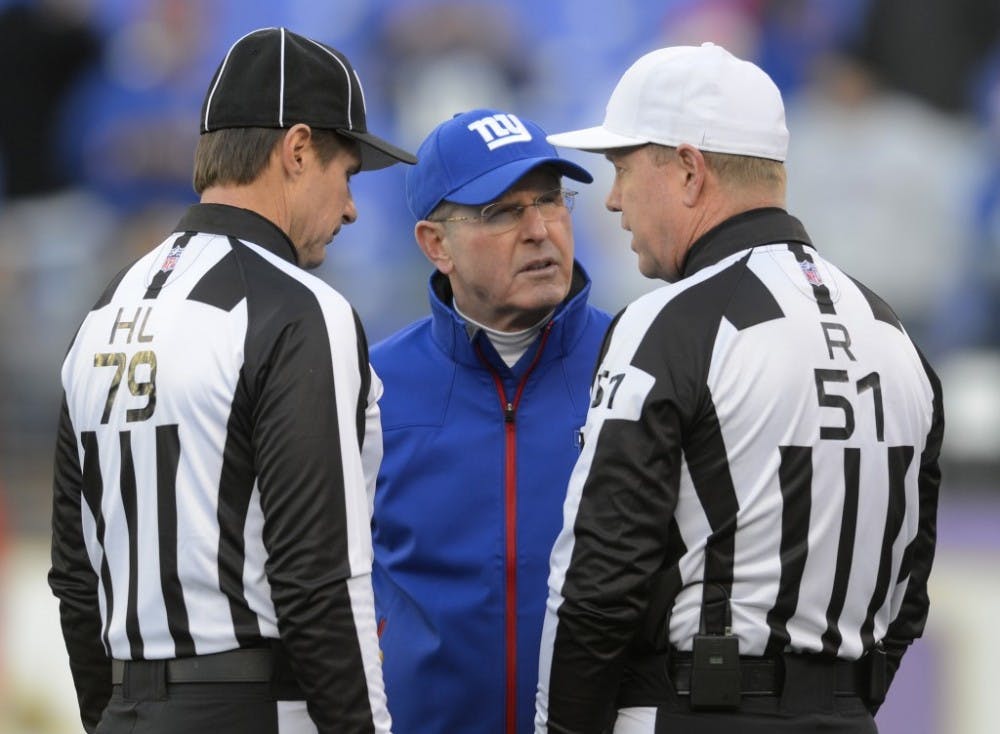Let’s get one thing straight: I’m a New York Giants fan. Always have been, always will be.
Before coming to Elon, I would watch every game on the same couch in the same room with my father and my recently deceased grandfather. On those days, sitting in our small living room, we would experience every stage of fandom from adulation to disappointment and frustration. But we watched every Sunday. No matter how poorly they played, we would never give up on them.
Which is why I just took you through memory lane. Because I’ll never give up on the Giants, no matter how excruciating their 38-0 loss last week to the Carolina Panthers was for me to stomach. If you aren’t aware of just how bad their loss to the winless Panthers was, then these stats should give you an idea.
It was the most lopsided loss of Tom Coughlin era, and the third worst shutout loss in franchise history. You want me to keep going? The Giants are now 0-3, the worst start in the Coughlin/Eli Manning era. The Panthers sacked Manning six times, SIX TIMES, in the first 17 minutes of the game. The offensive line couldn’t hold off the Panthers talented defensive lineman, who were in the backfield so quickly on every play that you’d of sworn they were getting a five second head start. They had to be. No offensive line is that porous. And yet, the Giants offensive line was. They allowed Manning to be sacked 7 times and knocked down at least 20 more times, if not more.
The offensive line was so bad that Manning had no time to look downfield, where he would’ve found gaping holes in an average Panthers’ secondary made worse by several key players being injured. The Panthers’ pass rushers were able to protect their shaky secondary by getting relentless pressure on Manning and forcing him to tuck the ball or to throw it away.
The Giants couldn’t get anything going on the ground either, as the front seven allowed the Panthers front four to penetrate the backfield at will and bury tailbacks David Wilson and Da’Rel Scott for negative plays. At halftime, Eli Manning, considered by no one to be a mobile quarterback, was the team’s leading rusher. If that doesn’t tell you there’s a problem, I don’t know what will.
The Giants defense isn’t without blame either, as they gave up 38 points to a wildly inconsistent offense that had averaged a pedestrian 17.5 points a game in its first two games. However, in the interest of fairness, the unit spent more than half the game on the field and wore down as the game progressed. But that doesn’t excuse their front four, widely considered to be the best in the league, for not recording a sack. Or the secondary for that matter. They allowed a mediocre offense to gain over 400 yards of total offense. They fought tooth and nail and gave up 17 points in the first half, a remarkable feat given the Panthers favorable field position on the majority of those drives. However, with their offense continuing to struggle to get anything going, the defense gave up, and the Panthers moved up and down the field with little resistance.
So how do the Giants move forward? Can they still make a run at the playoffs? Can they somehow keep Manning upright long enough to move the offense down the field? Those are questions every avid Giants fan is asking as they brace for Sunday’s showdown with the Kansas City Chiefs in Kansas City. In my eyes, the Giants are still in position to make a run, but this week’s game is as close to a must win as you’ll get in week four.
To win, they’ll have to improve up front in the trenches. Obviously, they can’t wish their offensive line starters back to health, but if there was any good that came out of the debacle in Charlotte, N.C., it was that their three new starters have gained valuable experience and can only improve going forward.
But it’s not just on them. The Giants’ offensive philosophy has to change in order to combat their line’s problems. Offensive coordinator Kevin Gilbride has to get the ball out of Manning’s hands quicker so that Manning remains upright on a more consistent basis. Gilbride needs to call more screens, slants and delayed runs so as to slow down their opponents pass rush. If the Giants can get the ball in the hands of their various playmakers, they’re going to move the ball better than they have previously. That strategy, if successful, will have a trickle down effect on the defense, which will spend less time on the field.


